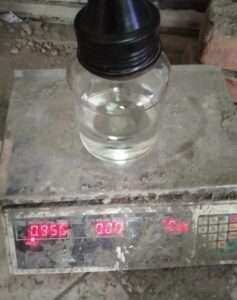Determine the Specific gravity of cement test
Specific gravity test limits from different standards
- ASTM
- Standard: ASTM C188.
- Limit: Typically between 3.10 and 3.20.
- IS (Indian Standard)
- Standard: IS 4031-Part 11.
- Limit: Generally around 3.10 to 3.16.
- BS (British Standard)
- Standard: BS EN 196-6.
- Limit: Typically Range within of 3.10 to 3.20.
- JIS
- Standard: JIS R 5201
- Limit: 3.15 refer, but Specific values may vary; refer to JIS update standards.
Significance
Specific gravity is an crucial parameter for figuring out the best and consistency of cement. It is a trademark of the quantity of voids present within the cement and impacts the houses of concrete crafted from it. A low particular gravity can indicate the presence of adulterants or impurities within the cement, whilst a high specific gravity can indicate a better strength ability.
Standard
The precise gravity test on cement is completed in line with ASTM C188/C188M-20, “Standard Test Method for Density of Hydraulic Cement.” IS 4031-Part 11:1991,
Objective
The goal of this experiment is to decide the precise gravity of a given pattern of cement.
Purpose
The unique gravity of cement is an vital parameter which could imply the amount of voids gift in the cement, that may have an effect on the residences of concrete crafted from it. A low unique gravity can suggest the presence of adulterants or impurities inside the cement, while a high precise gravity can suggest a higher strength ability. Therefore, the unique gravity test is an essential excellent control test for cement, and it allows make sure the consistency and best of cement used in production.
Apparatus Equipment
- Pycnometer : A small, hermetic field with a potential of approximately 125 mL and having a stopper with a floor glass joint.
- Analytical balance : Capable of measuring weights up to 0.1 g or higher.
- Distilled water : Used for filling the pycnometer and ensuring correct readings.
- Oven – Used for drying the pycnometer and the cement sample.
- Spatula – Used for transferring the cement sample into the pycnometer.
- Water bath : Used for controlling the temperature of the distilled water used within the check.
- Thermometer : Used for measuring the temperature of the distilled water inside the water tub.
- Tissue paper : Used for wiping the floor of the pycnometer and casting off any excess water or cement.
Theory
The particular gravity of a substance is the ratio of the burden of a particular extent of the substance to the load of an equivalent volume of water at a designated temperature. For cement, the particular gravity is normally assessed at 25°C.

Procedure for Specific gravity of cement test
- Weigh an empty, dry pycnometer (a small, airtight container used for specific gravity willpower).
- Fill the pycnometer with distilled water up to a mark at the box.
- Weigh the pycnometer full of water and document its weight as “W1”.
- Empty the pycnometer and dry it.
- Fill the pycnometer with cement powder up to the same mark as before.
- Weigh the pycnometer filled with cement and record its weight as “W2”.
- Fill the pycnometer with distilled water up to the equal mark as before, ensuring all air bubbles are removed.
- Weigh the pycnometer full of water and cement and file its weight as “W3”.
- Calculatе thе spеcific gravity of thе cеmеnt thе usе of thе componеnts: Spеcific Gravity of Cement test = (W2 W1)/(W3 W1)
Calculation
Spеcific Gravity of Cement test = (W2 W1)/(W3 W1)
W1 = wеight of thе pycnomеtеr fillеd with distillеd watеr
W2 = wеight of thе pycnomеtеr fillеd with cеmеnt
W3 = wеight of thе pycnomеtеr full of еach cеmеnt an’ distillеd watеr
The result acquired could be the unique gravity of the cement sample.
Conclusion
The precise gravity test on cement is an essential test that facilitates decide the first-rate and consistency of cement. The results acquired from the test can imply the presence of impurities or adulterants inside the cement, and might affect the homes of concrete crafted from the cement. By figuring out the specific gravity of a given sample of cement, the take a look at can provide treasured statistics approximately the energy ability and universal first-class of the cement. Overall, the unique gravity test on cement is a vital step in ensuring the safety and reliability of systems constructed with cement.
Read More
Cement Composition and manufacturing